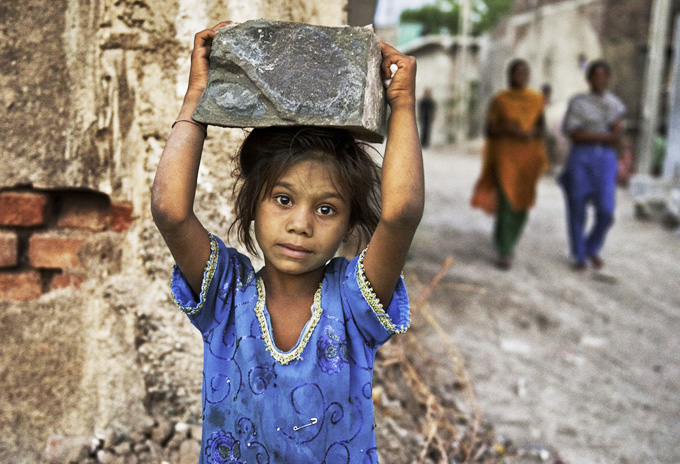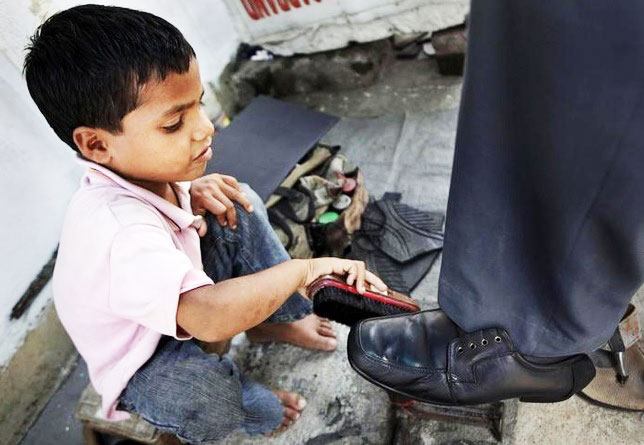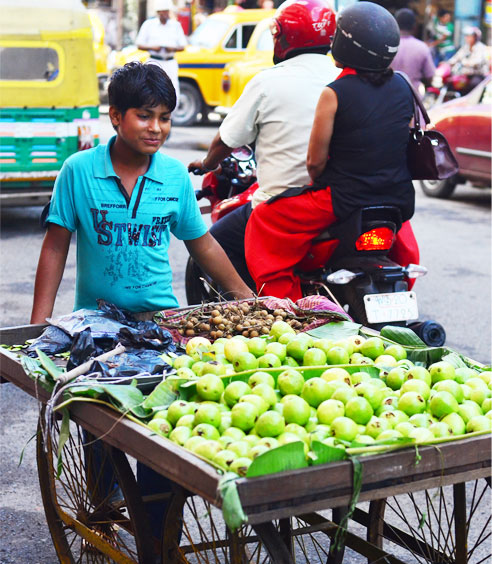 By Harris Zargar
By Harris Zargar
Poverty forces children to seek jobs in undisclosed service sector. Many are forced into prostitution, while many other become victims of human trafficking.
[dropcap]I[/dropcap]n most emerging countries, a large proportion of populations find jobs mainly in the informal economy. International Labor Organization (ILO) registers that the sector constitutes over half to two-thirds portions of all non-agricultural employment in developing nations. This sector is generally characterized by lack of social protection, low wages, and exploitative and hazardous working conditions. India also accounts for large number of workforce in the unorganized sector.
A key highlight of informal sector is the mutual dichotomous relationship between the informal economy and the female work force. In India, the number of informal sector workers was estimated at 394.9 million in 2004-05 as against 378.25 million in 2009-10 as per the government figures. The proportion of women in the informal sector was recorded at 94.0 percent in 1971; which rose of 96.33 percent till 1981, and was 95.8 percent in 1991. A 2013 ILO data showed continuing higher proportion of female worker in informal jobs, comprising about 70 percent of all non-agricultural employment in the country. As the formal economy tends to generate limited job opportunities and still remain very discriminatory towards the females, the informal sector has traditionally provided economic opportunities for women.

While the data clearly provides an insight into the gendered nature of the informal economy, it fails, however, to sketch the age demographics of this work force, a large portion of which happen to be children. Many scholars contend that a key characteristic of worker’s identity in informal sector is age, which often becomes critical function to determine labour in this sector. Traditionally, children form a big component of customary home-based or casual workforce in India. For example, in 2014, a Harvard University report revealed that an estimated 20 percent of carpets manufactured in the country involved child labour. A 2003 Human Rights Watch report claims children as young as five are employed and work for up to 12 hours a day and six to seven days a week in India’s silk industry.
Like women, children are easily susceptible to cost-cutting, low wages, and exploited to work for long hours. Casual child work is massively feminized with girls continuing to remain at greater disadvantage than boys. Girls remain highly vulnerable to physical, psychological and sexual abuse. Amongst the marginalized section of societies, even in urban areas, poverty forces children to seek jobs in undisclosed service sector. Many are forced into prostitution, while many other become victims of trafficking. Child workers are made to work or sold as servants, maids or even sex workers in many developing nations, including India.
Since the time and mobility of children remain controlled by senior family figures, they are easily employed in household enterprises, which are often hazardous, exploitative and detrimental to children’s growth. Moreover, children’s income generating activities are often subjected to control by the virtue of their position in the family where a male patriarch mainly regulates household tasks and money.

Barbara Harriss-White, a renowned scholar, notes that female casual labourers including child labourers are often subjected to excesses of ‘casualization, negligence, and harassment.’ A child casual worker is condensed at the bottom end of a working status ladder, where they are often given dangerous jobs, which requires hard manual labour and includes hazardous industrial tasks. Children also work with lowest average wages with nonexistent legal binding to such a extent that they might not receive any monetary compensations for months, or their work is casualized to an extent that any wages given is stated to be ‘pocket money’.
However, it is important to note that the existing empirical data on the informal economy has significantly failed to reflect on any social, cultural or other power dynamics that generated such configurations. Pertinently, the government statistics showed that the child labour in India had decreased significantly from 21.55 million in 2004–2005 to 4.94 million in 2009–10. These estimates, however, don’t elucidate whether the number accounted for those only in the organised and formal sector. It is unclear whether the data includes those children engaged in any economic activity within the unorganized sector that has largely remained static in its size of workforce over the decades.
The dwindling child labour estimates in India also seem far-fetched considering the grim realities on the ground. For instance, the official data records child labourers working as domestic labourers and in restaurants at about 2.5 million, while children rights groups and NGOs estimate the figure to be around 20 million.
Nobel Peace Prize winner and the founder of the Bachpan Bachao Andolan (Save Childhood Movement), Kailash Satyarthi asserts that child labour in India remains rampant in the informal sector. Moreover, a 2014 UNCIEF report suggests that the country has an estimated 17.8 million children out of school. Undoubtedly, these children often end up working in the informal sector. With the informal sector remaining largely unregulated, the functioning of this economy in a total grey area seemingly makes it difficult to record the number of children engaged in any form of economic activity.
The Data Dilemma
Ralf Hussmanns and Farhad Mehran, in their paper ‘Statistical definition of the informal sector – International standards and national practices’, emphasize that data sources for the number of persons employed and other characteristics of the informal sector vary among nations. They argue that in most countries, the existing data is available for urban areas only. They further note that “some countries, especially in the Asian region, Eastern Europe and the Commonwealth of Independent States, include small-scale or unregistered agricultural activities in their definition of the informal sector, while others restrict the definition to non-agricultural activities”.

The ILO has also accepted that the extent of bonded child labour is very difficult to determine and the actual number remains unknown. A recent report, titled Counting the Invisible by Plan International has also highlighted this discrepancy in government data on children, predominantly girls, facing abuse and inequality. The child rights organization noted that the governments would be unable to end the abuse and inequality facing millions of girls without better statistics on the realities of their lives.
Thus, reasonably, unless there is no concrete data on the number of children engaged in any form of economic activity within the informal sector, it is very difficult to uphold laws that seek to protect rights of children. The nature of the informal sector makes children, in particular girls from marginalised sections, very much vulnerable to exploitation and abuse.
While the scale of the informal sector makes it logistically improbable to regulate, several measure cans be placed to check child labour. These may include strengthening policing and hardening laws on child labour and trafficking; ensuring that large companies do not engage with entities that employ children or do not have proper working conditions; raising awareness in communities; making right to education a mandatory provision till a specific age and creating an institutional framework for rehabilitating children rescued from child labour. Improving data on child labour in the informal economy remains imperative to weed out child labour. These may seem like a wide range of measures, yet they may just be a fraction of measures, considering the scale of the challenge.
(Harris is a London-based Kashmiri journalist. He recently finished a master’s degree in Violence, Conflict and Development from the University of London, School of Oriental and African Studies (SOAS). He has been associated with many media organisations in South Asia including The Asian Age, Press Trust of India and Indo-Asian News Service, and has reported extensively on politics, minority affairs, environment and conflict issues.)










